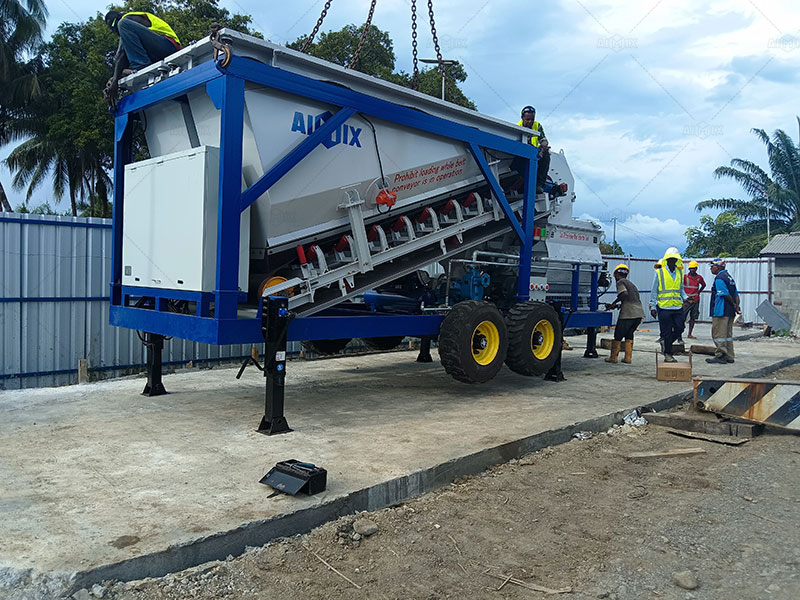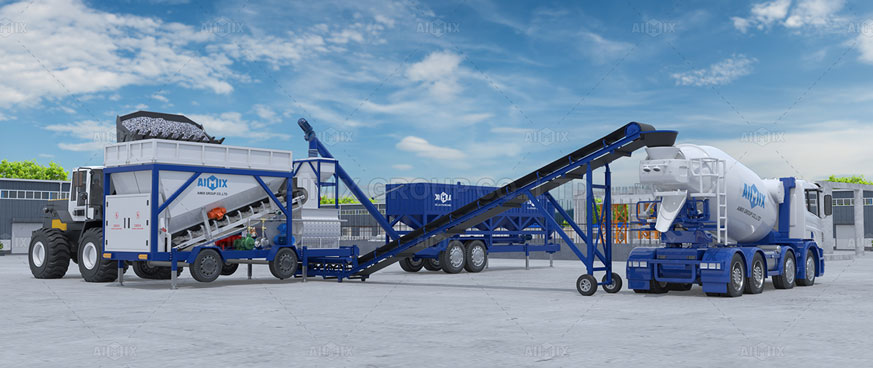In the competitive landscape of small to medium-scale construction, the margin between profit and loss is often determined by volumetric efficiency. For years, the mini batch plant segment has been plagued by a critical limitation: insufficient output that fails to keep pace with on-site demand, creating debilitating bottlenecks. Our engineering team has directly confronted this industry-wide impediment. The result is a paradigmatic shift in compact design—a 30% augmentation in mixing capacity without a commensurate increase in the mini concrete batching plant‘s physical footprint or energy consumption. This is not a minor iteration; it is a substantive reengineering of core mixing dynamics that challenges longstanding industry assumptions about what compact equipment can achieve. The implications for project timelines, resource allocation, and ultimately profitability are profound and merit serious examination.
Deconstructing the 30% Capacity Enhancement: Engineering Breakthroughs
The claimed productivity increase is not marketing hyperbole; it is the direct result of precision engineering and a rejection of conventional design dogmas. The principal innovation lies in a recontoured mixing drum that represents a fundamental departure from traditional cylindrical designs. By employing advanced computational fluid dynamics modeling, our designers have optimized the internal geometry to facilitate a more efficient material flow pattern, drastically reducing cycle times and minimizing adhesive residue that typically plagues conventional systems. This geometric optimization allows for a significantly larger effective mixing volume within the same external dimensions, achieving what was previously considered an engineering impossibility in this equipment class.

Advanced Agitation Mechanics and Power Transmission
Traditional plants rely on simplistic rotational force that often creates dead zones and inefficient mixing patterns. Our system introduces a dual-axis agitation mechanism that actively shears the mixture through counter-rotational movement, eliminating dead zones and ensuring a homogenous blend in a significantly reduced timeframe. This complex motion breaks up agglomerations of cement or aggregate that would otherwise require prolonged mixing, thereby unlocking new levels of batch consistency and speed. The power transmission system has been completely reengineered with hardened helical gears that provide greater torque capacity while reducing energy consumption by approximately 15% compared to conventional systems, making the capacity increase not just possible but energy-efficient.
Material Flow Optimization and Handling
The capacity enhancement extends beyond the mixing drum to encompass the entire material handling system. We’ve implemented a redesigned loading chute with computer-optimized angles that accelerate material intake without segregation. The aggregate batchers of ready mix concrete plant feature precision load sensors with millisecond response times, ensuring exact proportional accuracy even at accelerated cycling rates. This holistic approach to the entire mixing process—from material intake to discharge—ensures that the 30% capacity increase translates directly to usable output rather than creating new bottlenecks elsewhere in the system.

Tangible Impacts on Project Workflow and Economic Viability
The implication of a 30% throughput surge transcends mere numbers on a spec sheet. It fundamentally alters project scheduling and resource allocation in ways that create substantial competitive advantages. This capacity boost translates directly into the ability to complete foundations, slabs, and other critical pours in a single, continuous operation, thereby eradicating the costly and structurally dubious practice of cold joints. For projects operating under tight deadlines or in regions with limited working seasons, this enhanced throughput can mean the difference between completing a project on schedule and facing costly overruns.
Comprehensive Cost-Benefit Analysis
The economic calculus of equipment investment must account for both direct and indirect savings. While the initial investment exceeds that of conventional small concrete batch plants, the operational economics reveal a different story. The 30% capacity increase means that a single plant can now handle projects that previously required multiple units or frequent overtime operation. When factoring in reduced equipment rental costs, lower labor requirements per cubic meter produced, and diminished energy consumption per unit of output, the return on investment typically occurs within 12-18 months of operation for medium-volume producers. This accelerated payback period makes the economic argument for upgrading increasingly compelling.

Mitigating Labor and Idle Time Costs
With a higher output, the plant services demand from more trucks and crews more effectively. The most significant economic benefit is the drastic reduction in idle time for both personnel and delivery vehicles. This operational streamlining curtails labor costs and ensures that just-in-time delivery schedules are met with greater reliability, protecting your project from the exorbitant costs of delay. The reduced cycle time also means less wear on equipment components, extending service intervals and reducing maintenance costs over the plant’s operational lifespan.
Critical Considerations for Implementation and Operational Integration
While the benefits are compelling, a critical appraisal necessitates a thorough discussion of integration requirements and operational parameters. A concrete batching plant of this enhanced capability commands a robust material supply system that must be carefully evaluated before implementation. Feed conveyors and aggregate batchers must be calibrated to match this new pace to realize the full productivity gain, and in some cases may require upgrading to handle the increased material throughput. Furthermore, a higher output rate places greater emphasis on the quality of raw materials; inconsistent aggregate gradation or moisture content will be amplified at this accelerated cycle speed, potentially compromising final product quality if not properly managed.
Beyond Raw Output: A Systems Approach to Productivity
Maximizing this new capacity requires a holistic view of the entire production chain rather than focusing solely on the mixing unit. The plant’s increased output can only be capitalized upon if the supporting logistics—from aggregate stockpiling to truck scheduling—are synchronized with the enhanced capabilities. This necessitates a comprehensive review of operational procedures and possibly additional investment in complementary equipment such as larger aggregate bins or additional transport vehicles. Operations managers must develop new scheduling paradigms that leverage the increased capacity without creating new bottlenecks downstream. This upgrade is not merely a piece of machinery; it is a catalyst for adopting a more sophisticated, efficient, and ultimately more profitable operational methodology that can provide sustainable competitive advantages in an increasingly challenging market.
Training Requirements and Operational Protocols
The technological advancements embodied in this equipment require corresponding advancements in operator training and maintenance protocols. Personnel must understand the new operating parameters and monitoring requirements to ensure optimal performance and prevent damage to the enhanced systems. Maintenance schedules must be adjusted to account for the increased production volume, with particular attention to wear components that may experience accelerated deterioration despite their improved design. Proper implementation includes not just physical installation but a comprehensive program of staff training and procedural updates to ensure that the theoretical capacity increase translates into practical, sustainable productivity gains.